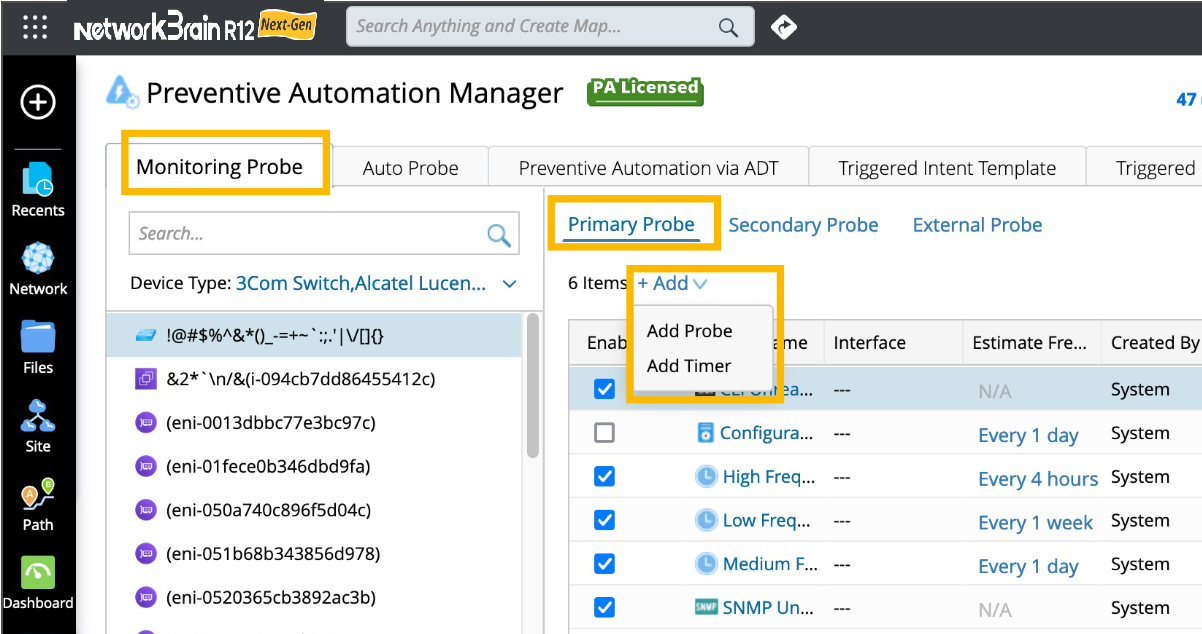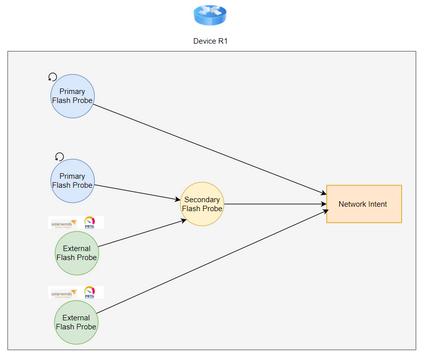R12.1-JA-2025June05
Flash Probe Category
A flash probe is used to identify whether a certain network alert is generated. It can be used via SNMP/CLI parser variables or external monitoring systems.
A properly defined flash probe usually has the following key characteristics:
- Single device analysis unit: the flash probe is designed to check the anomaly for a single device based on its SNMP/CLI data; it cannot be used to check the anomaly across multiple devices.
- Retrieved and executed in front server: the data retrieved for flash probe analysis is stored and analyzed in the front server. The system will discard any raw data after the analysis completes to make the solution more scalable.
From the Monitoring Probe tab in Preventive Automation Manager, you can define three types of flash probes:
-
Primary Probe: Primary flash probes can be polled frequently at a certain frequency. Two types of primary flash probes are currently supported:
- Alert-based Flash Probe: triggered by the device-generated anomaly.
- Timer-based Flash Probe: triggered by a timer and can be used for scheduled CLI/scheduled NI tasks.

-
Secondary Probe: Secondary flash probes will not be polled periodically like primary probes. Instead, they can be triggered by:
- Primary Probe (of the same devices or other devices)
- External probe
-
External Probe: External probes are used for integration with other monitoring systems. A device contains two types of external probes:

A device will contain two types of external probes:
-
Once the integration is completed, the alert triggered by 3rd party systems can implicitly generate external flash probes.
- Intent Timer (vehicle) probes are generated by the system.

-
Once the integration is completed, the alert triggered by 3rd party systems can implicitly generate external flash probes.